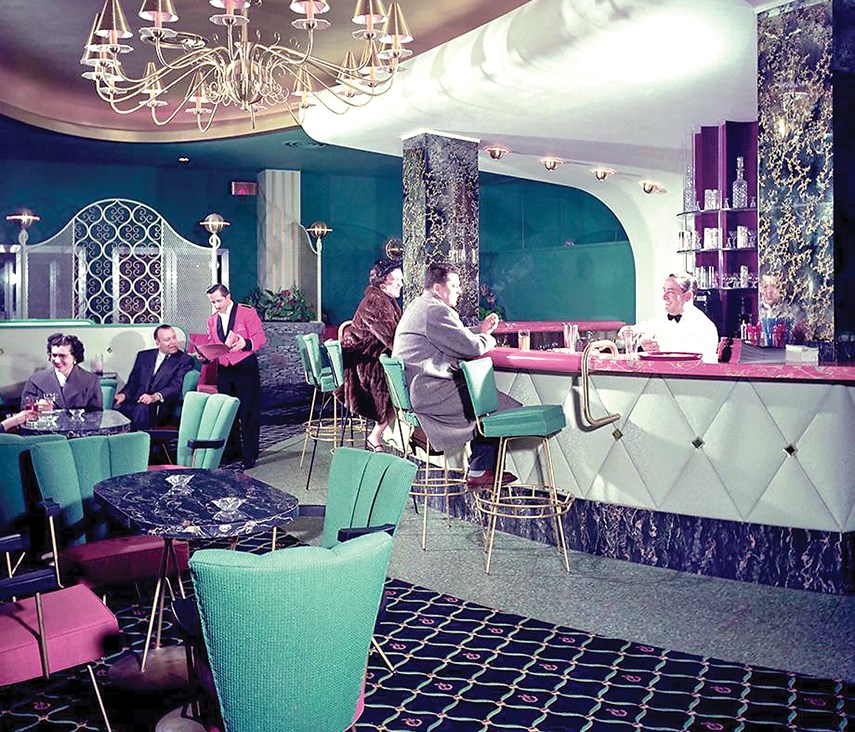What's Lost: Selwyn Pullan, West Vancouver Museum, until July 14. Guest Talk with Donald Luxton: Saturday, June 30, 2 p.m.
There used to be something there.
The feeling is hard to describe, even in French, but it comes on when Main Street and memory lane blur together and a shiny city block looks like a façade designed to hide the real, solid things that used to be there; things that ought to be there still.
If you have the right set of memories you get that feeling when you look at Isleview Road’s rocky lip and see where the Graham House once perched on the side of a cliff like Cary Grant in North by Northwest, immune to gravity and insensible to Art Noveau and Expressionist Architecture. It was West Coast Modernism before the term was popular and it was an Arthur Erickson before his skill for designing households made him a household name.
The gravity-defying home vanished after West Vancouver grudgingly issued a demolition permit in 2007, but photos of the house are included in What’s Lost, an exhibit of Selwyn Pullan’s work currently showing at the West Vancouver Museum.
“It’s a lasting legacy of this time frame,” says museum director Darrin Morrison. “A lot of these buildings are sadly gone.”
The exhibit includes a shot of the Clarke Simpkins car dealership on West Georgia Street from the era when AMC Ramblers promised to be the biggest most powerful classic ever. Pullan photographed CKWX Radio. He immortalized the Birks Building when the tower seemed to sneer down at the neon that adorned Vancouver’s skyline like graffiti.
The demolition or alteration of the buildings depicted lends the photos an added poignancy. For the museum, Pullan’s photos serve as a chronicle of postwar vibrancy.
“It provides a record of some of the innovative work that was being done in the middle of the 20th century on the West Coast . . . and it captures it in a uniquely brilliant way,” Morrison says. “A lot of these architects were doing innovative work and Selwyn was able to quickly come and take a photo-graph and be able to capture that spirit.”
Asked if Pullan was aware of what he was capturing, Morrison demurs.
“I don’t know if he would’ve been aware of that legacy when he was photographing,” he says.
Pullan was close-mouthed when discussing his work with local historian Eve Lazarus. Pullan dismissed a particularly striking photo as a “lucky shot,” and described his process of photographing a house by saying: “It was a house. I’d just go photograph it.”
However, architect Barry Downs, who worked with Pullan, described the longtime Upper Lonsdale resident as being quiet, observant and possessing an unerring sense of detail.
“He had a knack for capturing the essence of the design,” Downs says in a 2012 interview.
He would dress people up, pose them, and use natural light almost exclusively, according to Downs.
“He had an intuitive way of capturing the emotional qualities of a space,” Downs says.
Following his service with the Canadian Navy in the Second World War, Pullan studied his trade under photographer Ansel Adams in Los Angeles.
He returned to Vancouver with a style that veered from Norman Rockwell’s genteel optimism to Edward Hopper’s visions of loners for whom it’s always too late and never late enough. In a photo of the Ritz Hotel lounge from 1956, Pullan captures the hypnotic geometric configurations and the smiling faces. But on a marble pillar behind the bar we can see a ghostly reflection that renders everything in the frame surreal.
While some shots may have been nothing more than a commercial photographer’s assignments, Pullan seemed to be able to commune with architects like Erickson, Ron Thom, Bill Reid and E.J. Hughes.
“He certainly had incredible skill and aptitude in being able to capture the spirit of the architects’ intentions,” Morrison says.
Pullan died in September 2017, which makes the show something of a memorial, according to Morrison.
“It’s a tribute,” he says.
In 2014, Pullan donated his negatives and photos to the West Vancouver Museum, leaving curator Kiriko Watanabe with more than 10,000 images to sift through.
The exhibit includes a camera Pullan made for himself, his darkroom equipment, and rarely seen photos.
“They may not be expecting to see what they’re coming to see,” Morrison says of museum attendees.
The exhibit closes July 14. See it while there’s still something there.



